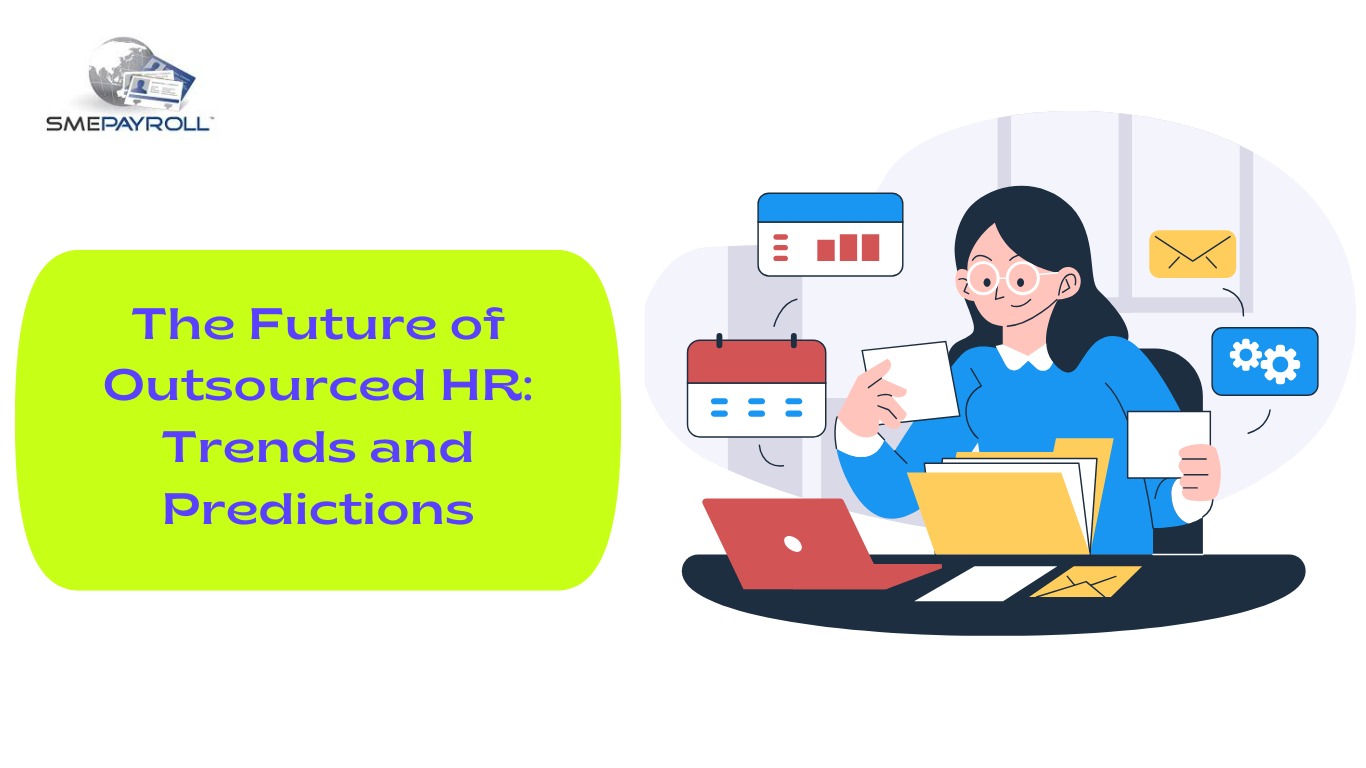To understand HR analytics and reporting in HRMS, delve into its introduction. Define HR analytics and reporting in HRMS and explore their significance in this field.
Table of Contents
Importance of HR analytics and reporting
HR analytics and reporting are a must in the modern workplace. They give incredible insights into worker performance, contentment, and whole organizational performance. These instruments help HR experts make educated choices, construct successful approaches, and pinpoint zones for improvement.
By studying HR data, businesses can recognize designs and trends enabling them to understand their workforce better. For example, analytics enable HR divisions to decide the elements that add to personnel turnover or detect the abilities holes inside the organization. This data empowers HR professionals to make focused solutions to address these issues and enhance employee maintenance and productivity.
Besides spotting issues, HR analytics and reporting also present proactive solutions. These tools can provide predictions about future labor force patterns dependent on past data. For instance, they can forecast which divisions are probably going to experience a deficiency of ability or feature impending difficulties that may influence business operations. Having this understanding, HR experts can take preventive steps to limit risks and guarantee the smooth working of the organization.
Moreover, HR analytics and reporting allow organizations to measure the achievement of their HR activities precisely. By following key performance markers (KPIs), such as staff engagement levels or training program results, these instruments offer concrete proof of progress. This data-driven methodology bolsters responsibility inside the HR division and permits continuous improvement in human resource management practices.
As per a report by Deloitte titled “Global Human Capital Trends,” 71% of surveyed organizations consider people analytics a top priority area for their company’s future growth strategies. This emphasizes the increasing acknowledgment of the importance of HR analytics and reporting in today’s competitive business environment.
Benefits of Using HR Analytics and Reporting in HRMS
To achieve the benefits of using HR analytics and reporting in HRMS, delve into the advantages of improved decision-making process, enhanced workforce planning and management, and increased employee engagement and productivity. Harness the power of data-driven insights in your HR practices and drive strategic outcomes efficiently.
Improved decision-making process
HR analytics and reporting integrated into HRMS bring about major improvements in decision-making. Advanced technologies and data analysis let HR professionals access crucial information about workforce trends, performance metrics, and employee engagement.
These insights help them make smart decisions about talent acquisition, performance management, and organizational development strategies. HR analytics and reporting also enable decision-makers to single out areas for improvement and take action to optimize resource allocation.
Plus, HR analytics and reporting allow for proactive decision-making based on evidence, not gut feelings or intuition. This ensures that strategic choices are objectively made, resulting in better outcomes for the organization.
HR analytics and reporting also offer a comprehensive view of workforce productivity, letting companies recognize top performers or teams that need training. By analyzing data on employee turnover rates and exit interviews, organizations can find out what’s leading to employee attrition and create tailored retention strategies.
In conclusion, integrating HR analytics and reporting into HRMS boosts decision-making with data-driven insights. By leveraging technology and analyzing workforce metrics, companies can make well-informed choices to drive organizational growth.
Pro Tip: Keep your HR analytics tools up-to-date with relevant data sources for accurate analysis and reporting.
Enhanced workforce planning and management
HR analytics and reporting provide insights to the organization’s talent pool. It reveals skill gaps, assesses employee performance, and forecasts recruitment or training needs. This data-driven approach helps companies stay ahead with proactive workforce planning strategies.
Moreover, HR analytics enables effective succession plans. It assesses skills and competencies of current employees to identify potential successors for key positions. This minimizes disruption and ensures a smooth transition.
Furthermore, HR reporting monitors employee engagement levels. It analyzes job satisfaction, turnover rates, and productivity metrics. This helps improve employee satisfaction and retention, creating a positive work environment and boosting productivity.
Staying ahead is essential for success. Unlock the power of data-driven decision-making with HR analytics and reporting. Transform your HRMS and ensure long-term success for your organization. Embrace this tool now!
Increased employee engagement and productivity
HR analytics can help companies identify key factors that drive employee engagement and productivity. With these insights, targeted interventions can be created to address issues. Predictive modeling also enables organizations to anticipate future trends and take proactive measures.
Continuous monitoring with analytics and reporting allow for timely adjustments and ensure strategies align with goals. AI-powered chatbots and mobile apps provide employees with real-time access to information and resources, enhancing their overall experience.
For maximum impact, data quality and accuracy must be ensured through robust data governance processes. This eliminates biases and potential errors, enabling organizations to make informed decisions.
Key Components of HR Analytics and Reporting in HRMS
To efficiently manage HR analytics and reporting in HRMS, dive into the key components of this process. Discover the power of data collection and integration, data analysis and visualization, and predictive analytics and forecasting. These sub-sections will provide valuable solutions to enhance your HR analytics and reporting capabilities.
Data collection and integration
HR departments use different methods to collect data, like surveys, evaluations, attendance records, and employee feedback. All this data is combined in the HR management system. Here, it’s analyzed to understand employee performance, engagement, training needs, and other essential workforce management factors.
Integrating data from recruitment platforms, payroll systems, and learning management systems is vital to guarantee accuracy and completeness. This gives HR professionals an overall view of their workforce and helps them recognize any trends or patterns that could affect company success.
An interesting case highlighting the significance of data collection and integration in HRMS is a company that was dealing with high employee turnover. Through analyzing data from exit interviews, performance evaluations, and employee satisfaction surveys, they identified issues causing staff dissatisfaction. With this knowledge, they created retention strategies and the turnover rate decreased dramatically.
Data analysis and visualization
HRMS systems are key for data analysis. They collect and organize employee data, enabling HR pros to assess things like turnover rates, absences, and training efficiency. This helps teams make decisions about talent, employee development, and performance management.
Visualizing data is great for HR. It makes complex info easier to understand. Interactive dashboards let managers drill down to get specific details.
Pro Tip: When using visualization tools for HR analytics, prioritize simplicity. Make visuals intuitive and user-friendly so everyone can understand the insights.
Predictive analytics and forecasting
Predictive analytics is key for pattern and trend identification. HR can examine employee data such as ratings, attendance, and career development to predict performance. Workforce planning is another important factor; current staffing, turnover, and market trends allow forecasting of future needs.
HR can also pinpoint potential issues early on. Surveys and exit interviews can reveal areas of dissatisfaction or low morale. Data collection across all HR functions is necessary, as well as investing in advanced analytical tools. HR professionals must continuously update their skills in data analysis and interpretation.
By utilizing predictive analytics and forecasting, organizations gain valuable insights. This enables HR to make informed decisions and optimize employee performance and engagement.
Challenges and Best Practices in Implementing HR Analytics and Reporting in HRMS
To effectively implement HR analytics and reporting in HRMS, address challenges and adopt best practices. Overcome data privacy and security concerns, establish a data-driven culture, and ensure data accuracy and quality. By understanding these sub-sections, you can navigate the complexities and optimize HR analytics to drive informed decision-making in your organization.
Data privacy and security concerns
Organizations should implement encryptions, access controls, and regular system audits to address concerns. Data anonymization techniques can protect personal data while allowing analysis. Regular employee training on data privacy should create awareness and compliance.
Outsource data storage and management to reputable third-party vendors with robust security protocols. Thoroughly vet these vendors.
Form a team with IT, HR, legal and cybersecurity specialists to formulate policies and protocols. This ensures collaboration across departments. Identify vulnerabilities, mitigate risks, and respond to any security incidents quickly.
Prioritize data privacy and security. This promotes trust and protects valuable employee data from unauthorized access. Follow these suggestions to confidently use HR analytics without compromising data.
Building a strong data-driven culture within the organization
Constructing a powerful data-driven culture in an organization is necessary for success. It involves utilizing data to control decision-making processes and foster a better understanding of the business. Here are some essential points to remember:
| – Matching goals: | It’s essential to guarantee that the objectives of the organization are in line with the utilization of data analytics. This means precisely determining what data should be collected, how it will be used, and how it links to total business goals. |
| – Changing attitude: | Establishing a data-driven culture requires a shift in mindset throughout the organization. This comprises of educating employees on the value of data and promoting its application in decision-making processes. Promoting collaboration across departments can also aid in creating a culture of data-driven thinking. |
| – Access to related data: | To construct a strong data-driven culture, organizations must supply access to relevant and reliable data for all employees. This could involve implementing a comprehensive HRMS system that can effectively gather and analyze workforce-related data. |
| – Training and training: | Investing in training programs that focus on developing analytical skills is essential for creating a data-driven culture. By providing employees with the necessary knowledge and tools, organizations can enable them to make wise decisions based on accessible data. |
| – Tracking progress: | Regularly assessing the effect of HR analytics and reporting initiatives is needed for continuous improvement. By monitoring key metrics and analyzing trends over time, organizations can perfect their strategies and guarantee they are on track to meet their goals. |
Pro Tip: To effectively apply HR analytics and reporting in your HRMS system, contemplate forming distinct communication channels between leadership, HR pros, IT teams, and other relevant stakeholders. This will guarantee smooth integration and cultivate a collaborative approach towards data-driven decision making.
Ensuring data accuracy and quality
Data accuracy & quality are essential for successful HR analytics & reporting in HRMS. It guarantees reliable insights & informed decision-making. For this, data verification processes should be implemented. Audits & checks should take place to detect errors or inconsistencies.
Data cleansing techniques must be used too. This can be done with automated tools or manual review processes. Protocols that validate data should be established to make sure the collected info meets specific criteria.
Data integration is also critical for accuracy & quality. Integrated systems enable data to flow across platforms without errors. Streamlining the process helps organizations ensure consistency & reliability in their HR analytics.
To boost data accuracy, employee training programs should be organized to promote data literacy. All HR personnel handling & interpreting data should be equipped with necessary skills. This will minimize human errors & improve data quality.
Future Trends in HR Analytics and Reporting in HRMS
To fully explore future trends in HR analytics and reporting in HRMS, delve into the impact of artificial intelligence and machine learning in HR analytics, and unravel the possibilities of real-time reporting and dashboards.
Artificial Intelligence and machine learning in HR analytics
AI and ML are crucial for HR analytics. They help companies use data to make better decisions and streamline processes. Here are three key benefits of using these technologies:
- Automation: AI algorithms can automate mundane tasks like resume screening, interview scheduling, and employee onboarding. This not only saves time but also eliminates human errors.
- Predictive Analytics: AI algorithms can crunch huge amounts of data to predict future trends in employee behavior, performance, and engagement. This helps HR pros take proactive measures to improve workforce productivity and retention.
- Personalization: ML algorithms can personalize employee experiences by understanding individual preferences and recommending relevant training programs or career development opportunities. This boosts engagement and satisfaction.
AI and ML also help with talent acquisition, workforce planning, diversity initiatives, and even employee well-being programs. These techs keep improving, changing the way companies manage their human resources.
Success stories show that AI and ML technologies have been successfully integrated into HR analytics systems. A leader in the tech industry, for example, used chatbots powered by NLP to handle routine HR queries. The chatbots were trained with historical data to respond quickly and accurately. This reduced the workload of the HR team while providing employees with timely help.
These technologies will continue to shape the future of HR analytics. It’s exciting to see how they will further enhance workforce management and contribute to organizational growth.
Real-time reporting and dashboards
HR teams can use real-time reporting and dashboards to quickly spot trends, recognize problems, and make informed choices. All they need is a quick glance at the dashboard to see the organization’s HR status and promptly respond to any chances or obstacles.
Also, these tools allow HR people to drill down into precise regions. They can access particular details about employees or teams, assisting them to understand their advantages and disadvantages. This knowledge permits them to provide personalised training and development plans that suit each employee’s requirements.
To gain the most from real-time reporting and dashboards in HRMS software, here are a few tips:
| 1. Change dashboards: | Personalise the dashboard layout to display metrics that relate to your organization’s objectives. By emphasising key indicators on the dashboard, you can quickly see critical info without being overloaded by excessive data. |
| 2. Set-up automated alerts: | Introduce notifications that inform you when certain parameters vary greatly from pre-set standards. Automated alerts make sure that you handle any out-of-the-ordinary results or potential issues before they get serious. |
| 3. Regularly review reports: | Schedule regular examinations of reports produced from real-time analytics. Examining trends over time allows you to discover patterns and make decisions based on data that have long-term effects for your organization. |
| 4. Promote data-driven decision-making: | Urge all stakeholders to utilize real-time reporting in their decision-making processes. By encouraging a data-driven attitude throughout your organization, you can create a culture that values evidence-based choices backed by comprehensive analytics. |
Organizations can navigate the ever-changing HR management landscape properly by embracing real-time reporting and dashboards in HRMS systems and following these suggestions.
Conclusion
To better understand the importance of embracing HR analytics for future HR strategies, let’s explore the conclusion. This section provides a summary of the benefits and key components of HR analytics and reporting in HRMS. By delving into these sub-sections, you will gain valuable insights into the true potential of HR analytics for improving organizational outcomes.
FAQs
Ques 1. What is HR analytics?
Ans 1. HR analytics is the process of collecting, analyzing, and interpreting data related to the workforce to make informed decisions and improve HR strategies and practices.
Ques 2. Why is HR analytics important?
Ans 2. HR analytics helps organizations gain valuable insights into employee performance, engagement, recruitment, retention, and overall HR effectiveness. It enables data-driven decision-making and enhances the effectiveness of HR processes.
Ques 3. What data can be analyzed in HR analytics?
Ans 4. HR analytics can analyze a wide range of data, including employee demographics, performance metrics, training and development outcomes, compensation, employee satisfaction surveys, and more.
Ques 4. How does HR analytics contribute to HRMS?
Ans 4. HR analytics in HRMS enables HR professionals to generate and access various reports and dashboards that provide insights into workforce trends, talent gaps, employee engagement, and other HR-related metrics. It helps in making data-driven decisions and tracking the effectiveness of HR initiatives.






















Leave feedback about this